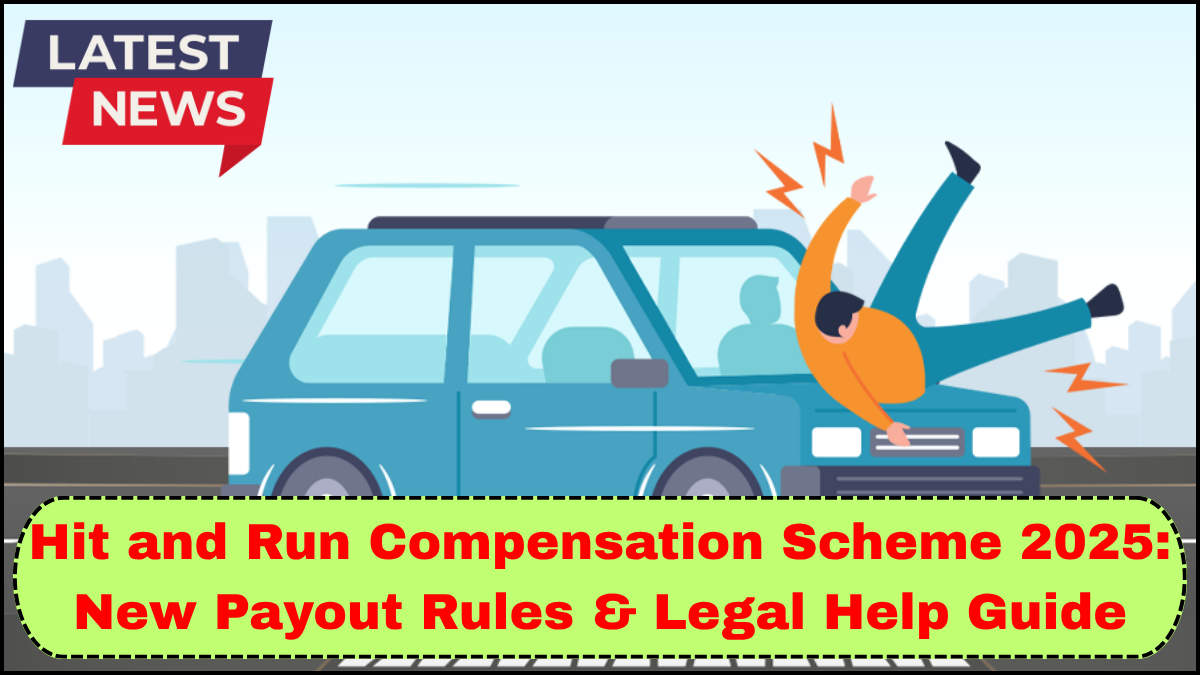The Hit and Run Compensation Scheme 2025 marks a major shift in how accident victims are financially supported in India after being injured or losing a loved one due to an unidentified or fleeing vehicle. Designed to deliver faster, fairer, and more transparent payouts, this scheme redefines the role of government intervention in road safety and victim support.
Here’s everything you need to know about the latest rules, compensation amounts, eligibility criteria, and how to access legal help if you or a loved one has been affected.

What is the Hit and Run Compensation Scheme?
The Hit and Run Compensation Scheme is a government-backed initiative that offers monetary compensation to individuals (or their legal heirs) who are injured or killed in a road accident where the offending driver or vehicle is untraceable.
Unlike standard motor accident claims where the vehicle and driver are identified and sued, hit-and-run cases often leave victims helpless. This scheme fills that gap by offering fixed compensation through a simplified process.
Key Updates in the 2025 Scheme
The Hit and Run Compensation Scheme 2025 brings in several enhancements over its previous version under the Motor Vehicles Act, 1988. Here are the main changes:
1. Increased Compensation Amounts
-
For Death: The compensation amount has been increased from ₹2 lakh to ₹4 lakh.
-
For Grievous Injuries: The payout has doubled from ₹50,000 to ₹1 lakh.
This move aims to make financial support more meaningful, especially for low-income families affected by such tragedies.
2. Faster Processing Timelines
Under the new rules, the time to process and disburse compensation has been streamlined:
-
Victims or their families can expect compensation to be released within 30 days of application approval.
-
Use of digital platforms and Aadhaar-linked databases ensures faster identity verification and fund transfer.
3. State-Level Disbursement Committees
Each state now has a dedicated Motor Accident Fund Implementation Committee that monitors claims and ensures proper distribution of funds. This decentralization is expected to reduce red tape and speed up the approval process.
Eligibility Criteria for Accident Victims
To qualify under the scheme, certain conditions must be met:
-
The accident must involve a hit-and-run case—where the vehicle responsible is unknown or the driver has absconded.
-
The victim must suffer grievous injuries or fatalities.
-
The incident must be reported to the police, and a copy of the FIR must be submitted with the compensation application.
It’s important to file the claim within six months of the accident to remain eligible.
How to Apply for Compensation
Here’s a step-by-step guide for accident victims or their families to apply:
-
File an FIR immediately after the incident.
-
Seek medical attention and collect all relevant documents, including medical reports and bills.
-
Submit the application through the District Claims Enquiry Officer or via the online portal introduced by the Ministry of Road Transport & Highways.
-
Attach supporting documents: FIR, post-mortem report (if applicable), Aadhaar card, income proof, and hospital bills.
-
The application is reviewed by the Claims Settlement Committee, and compensation is released upon approval.
Legal Aid for Victims: Know Your Rights
Navigating the legal aspects of accident claims can be overwhelming, especially in traumatic situations. Fortunately, legal aid is now more accessible under the 2025 scheme:
-
Victims from economically weaker sections can access free legal services through Legal Services Authorities at the district and state levels.
-
Many non-governmental organizations (NGOs) also offer assistance in filing claims and accessing government support.
-
In case of disputes or rejections, victims have the right to appeal through motor accident claims tribunals.
If you’re unsure about the legal procedures or paperwork, it’s wise to consult with a lawyer specializing in motor accident claims.
Impact on Road Safety and Accountability
Though this scheme provides crucial support, it also raises larger questions about road safety and enforcement. The government has emphasized stricter implementation of CCTV-based traffic monitoring and number plate recognition systems to reduce hit-and-run cases in the long term.
FAQs: Hit and Run Compensation Scheme 2025
Q1: What if the vehicle is later identified?
If the vehicle responsible is found after compensation has been paid, the amount may be recovered from the offender or adjusted against any future claim.
Q2: Can I claim insurance and government compensation together?
Yes, but if you receive compensation from an insurance company or other legal claim, the hit-and-run payout may be adjusted accordingly to prevent double compensation.
Q3: Who pays for the compensation?
The compensation is paid out of the Motor Vehicle Accident Fund, which is financed by the central government and managed at the state level.
Q4: How long do I have to file a claim?
You must file your claim within 6 months from the date of the accident.
Q5: Where can I get the application form?
Forms are available at local police stations, district magistrate offices, and on the Ministry of Road Transport & Highways website.
click here to learn more